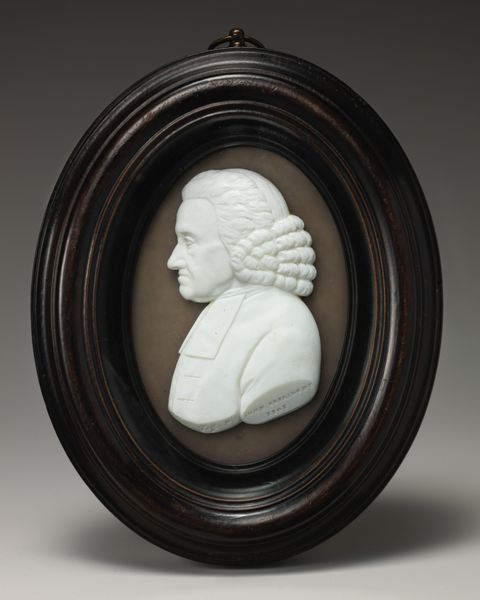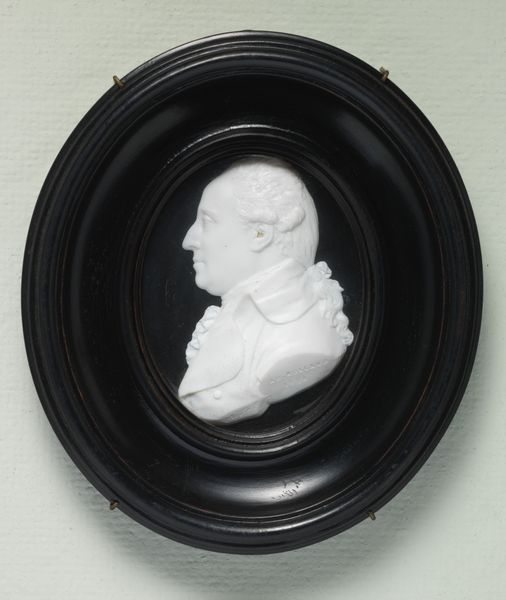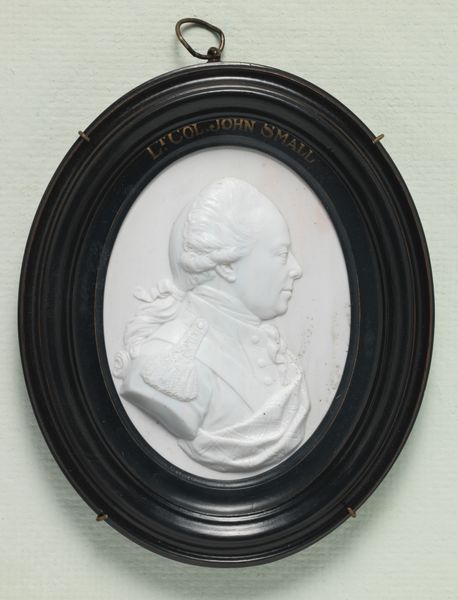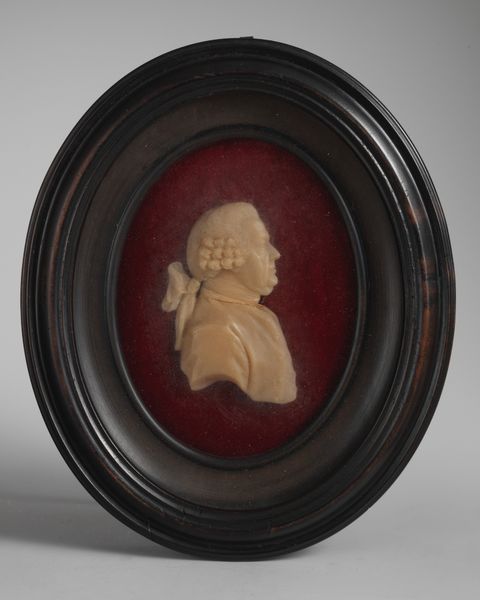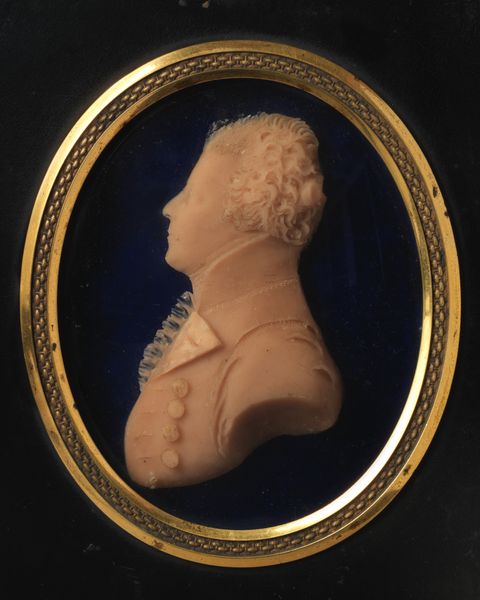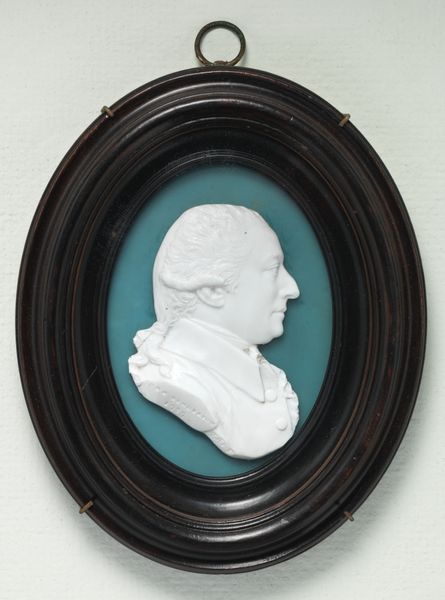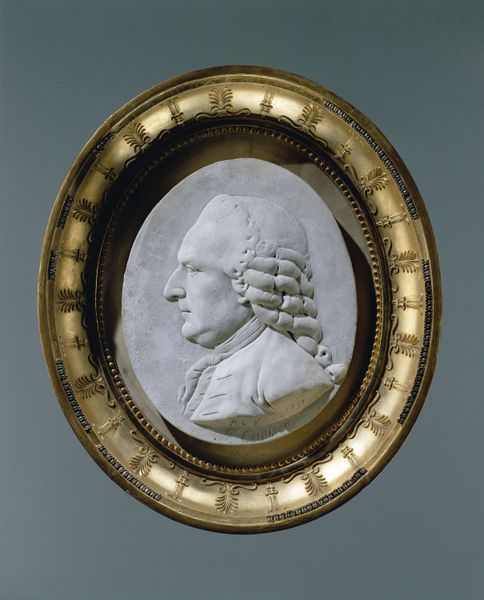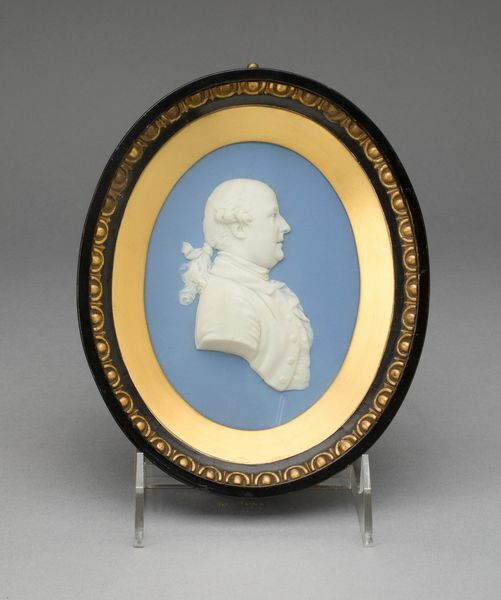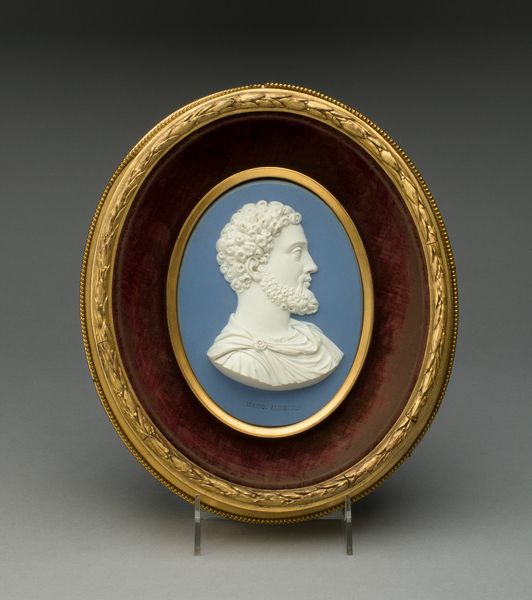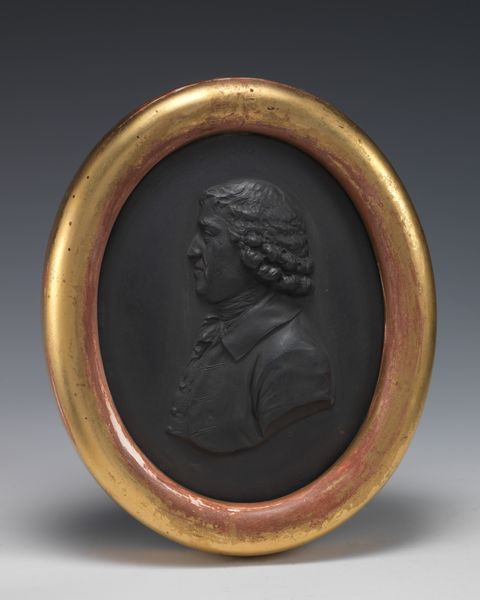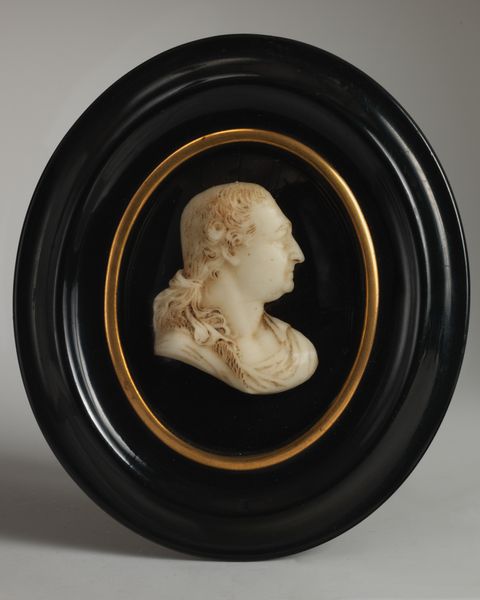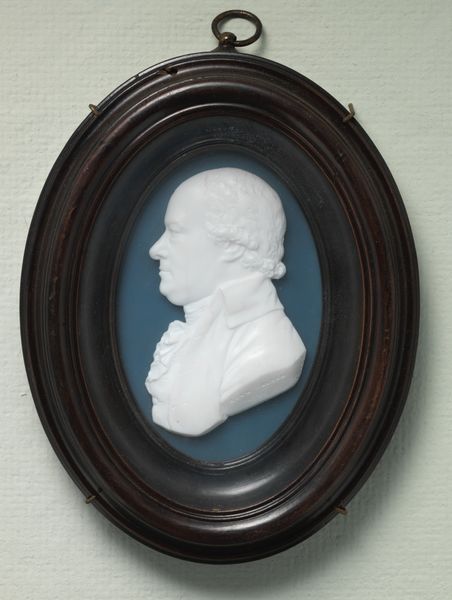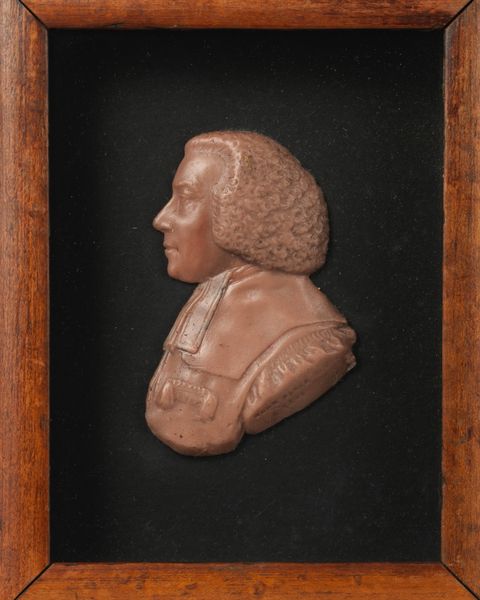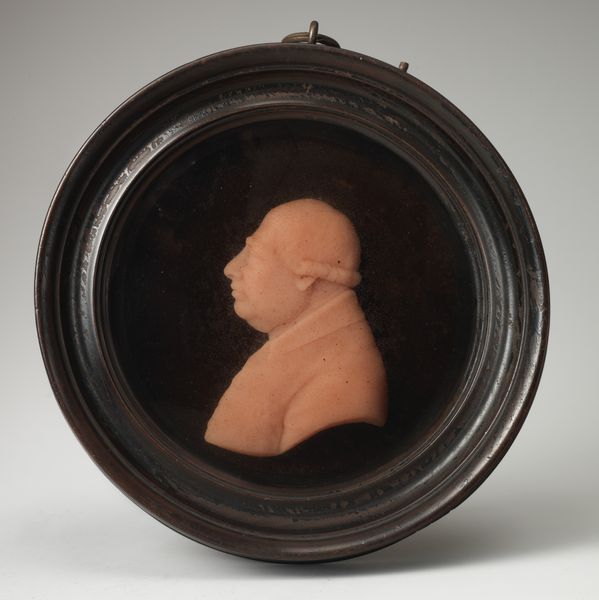
sculpture, ivory
#
portrait
#
neoclacissism
#
sculpture
#
sculptural image
#
sculpture
#
ceramic
#
decorative-art
#
ivory
Dimensions: 3 1/2 × 2 1/2 in. (8.9 × 6.4 cm)
Copyright: Public Domain
This portrait of William Robertson was made in the late 1700s by Thomas Engleheart. It's carved from ivory, a material prized for its smooth texture and subtle warmth. Consider the labor involved in a piece like this: first the sourcing of the ivory, then the slow, careful work of carving, using specialized tools to achieve such fine detail. The smooth surface and delicate modeling speak to Engleheart's skill. Ivory, of course, comes from elephants, connecting this object to the wider world of trade and exploitation. The very material carries a history of human impact on the natural world. And think about the social context: a portrait like this would have been a status symbol, a way for Robertson to project an image of himself as a man of learning and refinement. So, when we look at this portrait, we're not just seeing a likeness of a man. We're seeing a complex web of materials, labor, and social meaning, all brought together in a single, exquisitely crafted object.
Comments
No comments
Be the first to comment and join the conversation on the ultimate creative platform.
